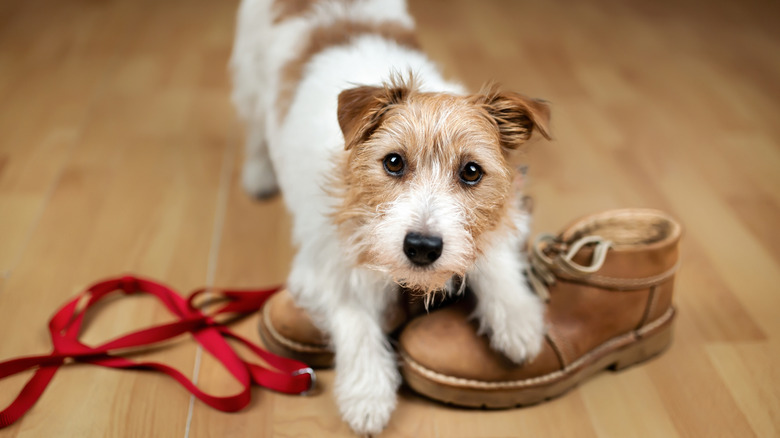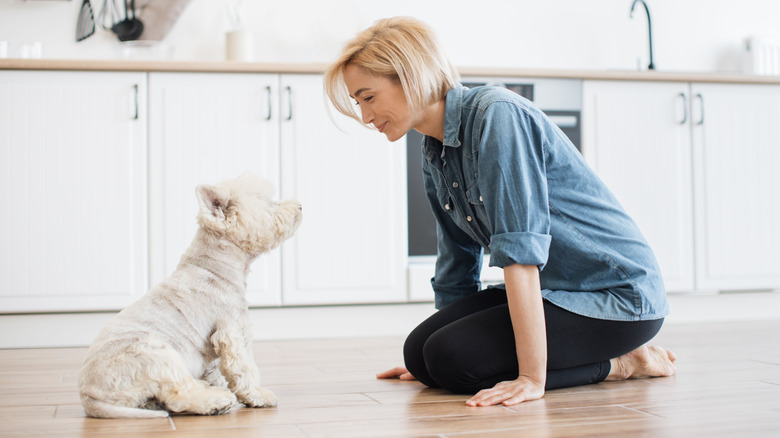The Completely Normal Human Behavior That Makes Your Dog's Anxiety Worse Every Time
We may receive a commission on purchases made from links.
Pet parents love to see the ways they can get their dogs excited. Who can blame them? Witnessing a dog's reaction to the mention of its favorite outdoor activity, when rummaging through a bag of treats, or playing with its favorite toy is a genuinely joyful experience. It's hard not to react to a dog that is ridiculously happy to see its owner, but a pet parent may unintentionally give their dog negative cues on how to behave — especially when coming and going.
While your dog may be excited to have you home after even the briefest outing, adding to its energy can cause anxiety that can escalate into unwanted traits like excessive barking, destructive behavior, or peeing inside. A pooch in waiting may start associating its owner's return with positive stimulation, such as letting it out, playing with it, or just giving it an enthusiastic greeting. The anticipation of interacting with its favorite person and not having these expectations met can heighten anxiety. This anxiety-inducing behavior can also extend to leaving the home with an overly expressive or emotional goodbye.
It's a natural response for some owners to shower their dogs with affection when they leave or return home. However, it is recommended that owners wait to greet their dogs and minimize attention. You may want to give your dog 5 to 10 minutes to calm down before you say hello. The same routine can be applied before leaving, with 10 minutes of non-engagement before departing. Exercise before leaving a dog alone can also help burn its anxious energy. However, not all dogs are the same, and sometimes establishing the perfect routine for coming and going requires extra effort.
Alternative ways to greet your dog that won't cause anxiety
Certified dog behavior consultant Sarah Fraser of Instinct Dog Behavior and Training has a nuanced approach to greetings. For her, completely ignoring a dog has not proven as effective. Instead, a calm, simple greeting with a neutral expression is recommended. She states, "The initial acknowledgment is important so your dog doesn't worry that they've suddenly become invisible."
From here, Fraser recommends using several training techniques. The techniques can help redirect your dog's behavior and offer soothing, calming alternatives to overexcitement. They include giving a handful of treats to redirect your dog's attention to a new task at-hand or using a KONG Classic Stuffable Dog Toy packed with almond or peanut butter to keep your dog occupied. If food motivation is not an option or is ineffective, a toy basket by the door can ease your dog's anxious mind when handed its favorite toy. Alternatively, trying to sit down and focus on soothing your dog with a calming touch can also help lessen its anxiety.
The best approach to combatting a dog's anxiety when arriving home or leaving will depend on the dog's personality. However, the desire to greet it with the same energy it has or give a long goodbye is counterintuitive to how you want it to feel. People can hide their excitement or sadness for the greater good of their pets; it can be difficult for the passionate owner, but it is the best way to avoid unnecessary anxiety.

